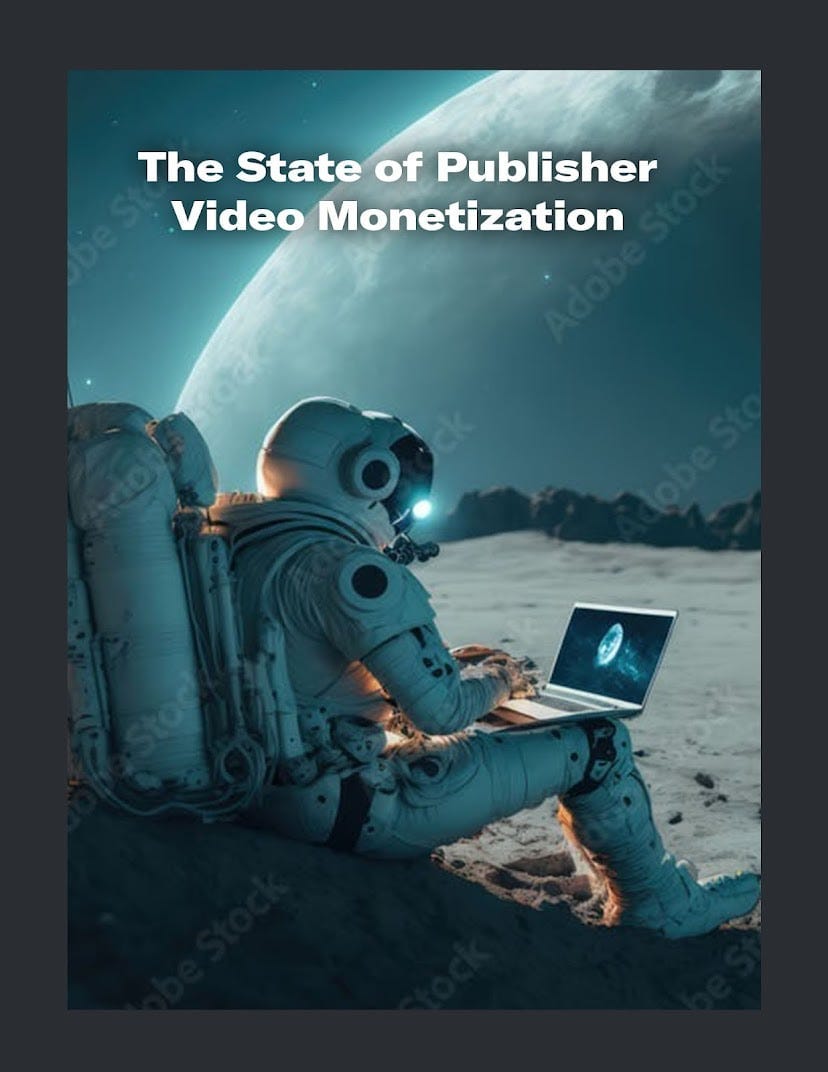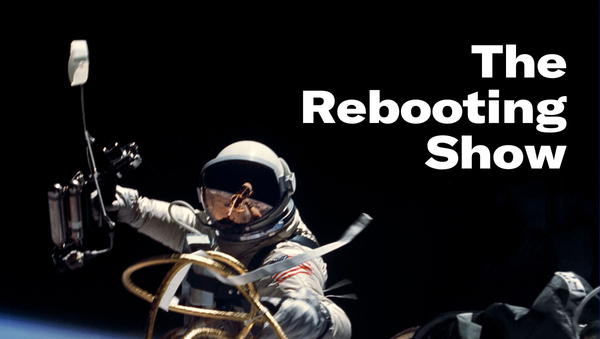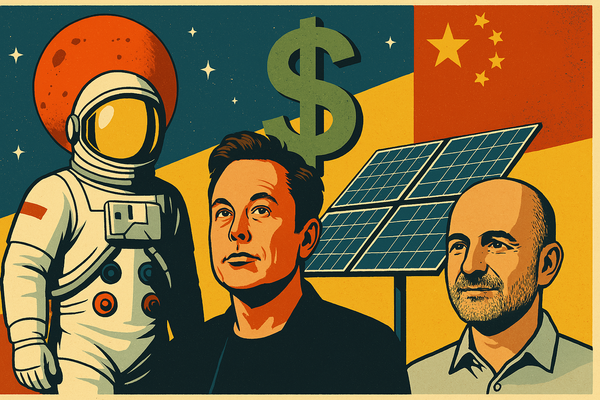The messy middle of video
Publishers see big opportunities, yet often fail to capture them
Today, The Rebooting is debuting its first research report, which found a noticable gap between the strategic importance publishers place on video and their current revenue from video. Thanks to VideoElephant for supporting the report and Mike Shields from Next in Media for collaborating with me on making it.
Recommendations
Google is on trial, and one of the main complaints from the government – Google cutting deals to be the default search engine – is literally the oldest plank of their business strategy. I was covering Google in its earliest days, and paid search rival Overture (formerly GoTo) would complain to me non-stop that Google was “buying distribution” through money-losing deals to sew up distribution on properties like AOL. It was just looked at as smart business then, hardly something that was done in secret. (NYT’s The Morning)
News Corp’s raising the specter of a “tsunami” of job losses in the news sector due to AI. These two things can be true: There’s a good case for what News Corp CEO Robert Thompson calls “epochal” change and this is also part of a lobbying effort to get leverage in negotiation with tech giants. (Yahoo)
Disney faces difficult strategic choices as it seeks to fill a leaky bucket. “Is it possible for ESPN to make enough EBITDA from streaming, quickly enough, to replace the EBITDA that will be lost as more and more people cut the ESPN cord?” Puck’s Bill Cohan writes, suggesting Amazon emerges as an ideal partner. (Puck – sponsored*)
I talked about the more-with-less media era on the Making Media podcast, and got into how I’m approaching building The Rebooting. Thanks to Matt and Dom for the fun conversation. (Making Media)
Offices are becoming weirder and weirder. I’m trying to be open to “feedback” becoming “feed forward” and finding it difficult. Maybe this is aging. (WSJ)
*Puck’s celebrating its second anniversary. As part of our partnership, Puck’s offering 25% off if you use INSIDEACCESS at checkout. Sign up here.
The messy middle of video

One of the biggest challenges for any business, particularly publishing businesses, is uncovering revenue opportunities while simultaneously balancing the resources, timeline and infrastructure needed to capture them.
The chase for incremental revenue has often turned out to be illusory, at least for durable, high margin opportunities. Video presents such a challenge for many publishers. In our first research project, we partnered with VideoElephant to survey 165 publishers to understand where video fell in their strategies and how well they assess they’re doing in capturing that opportunity. We complemented that with insights from executives at G/O Media, The Weather Company, IGN and more. Check out the resulting report, “The State of Publisher Video Monetization.”
What we found was a divide between how video is perceived strategically (very important) and its current business reality (often modest for many publishers). In the survey and through stakeholder interviews, we found that publishers are scrambling to catch up as consumers’ preference shifts to video, yet they’re struggling to match that with revenue. In fact, half of respondents to our survey said they are generating less than 10% of their revenue from video.
That gap is explained by the perception that video is a big bet and requires resources cash-strapped publishers do not feel confident in deploying, particularly with institutional memories of certain unnamed pivots. Out of those who have video players on less than a quarter of their pages, the No. 1 reason identified is a lack of resources rather than a lack of audience demand or concerns about the user experience.
Publishers are more likely to identify hurdles on the supply than the demand side. For instance, more publishers cite a lack of supply of video content or viewers than a lack of ad demand for video content.
Video strategy turns out to be a collection of strategies: production, monetization, editorial, team resourcing and more. Our research point to a need for an incremental approach is needed, with a new approach that builds on shortcomings of past efforts, with a mix of internal and external resources.
Thanks to VideoElephant for their support in making this survey happen. Check it out and let me know your thoughts. My email is bmorrissey@therebooting.com. We plan to do regular research projects in the months ahead.
The services pivot, dismembering Disney
On the latest episode of People vs Algorithms, we discussed my podcast interview with Bustle Digital Group’s Jason Wagenheim, and the prospect of many publishers becoming service providers. Alex went through all the downsides of the agency model – “the second worst business after being in a media company” – but I like a reality-based world. And the reality in many categories is that the demand for services is one where you aren’t in competition with giant tech companies that have far better data and overall ad systems.
“If you can’t harvest your primary media asset, which is how media works by either selling access to content or parcel it out on a CPM basis, then you have to use your other assets, which are your brand, your ability to wrangle talent and create content to create value, and it’s distributed by other means,” Troy said.
One of the things I’ve marveled at is how good Instagram ads are. I get put into segments – I’m in an e-bike segment now – and it’s like a new mall experience. All kinds of product options come my way, and usually when I’m meandering through food videos. It’s the best ad experience around, the new trip to the shopping mall. But it’s not one publishers can compete on: they don’t have the data, the sheer scale of advertisers (every e-bike maker in the world apparently advertises with Meta), and the scrolling mode of social media that makes shopping content a welcome, or at least tolerated, intrusion. I’m not in e-bike mode when reading up on Ukraine.
So services. More publishers will derive more of their income from acting like ad agencies for clients and wringing value out of both their content and their brands far beyond the immediate media value.
Plus: Troy sees the inevitability of tech companies becoming the rebundlers of TV. Just look at the improved experience of YouTube TV now that it has Sunday Ticket.
“Increasingly my relationship with my content providers is like a marketplace,” Troy said. “If I’m buying from a cable company, I’ll have choices what’s in the bundle. Apple, YouTube, Amazon and Roku are basically platforms for buying content services.”
Check out the episode on Apple, Spotify or wherever you get your podcasts. And please leave us a rating and review.
Thanks for reading. Send me feedback by hitting reply or sending me an email at bmorrissey@therebooting.com
Sign up for invites to The Rebooting Dinner Series. We have upcoming private executive dinners focused on direct-sold advertising, making money from video, subscriptions and a pair of Advertising Week dinners for both ad buyers and publishing executives.




